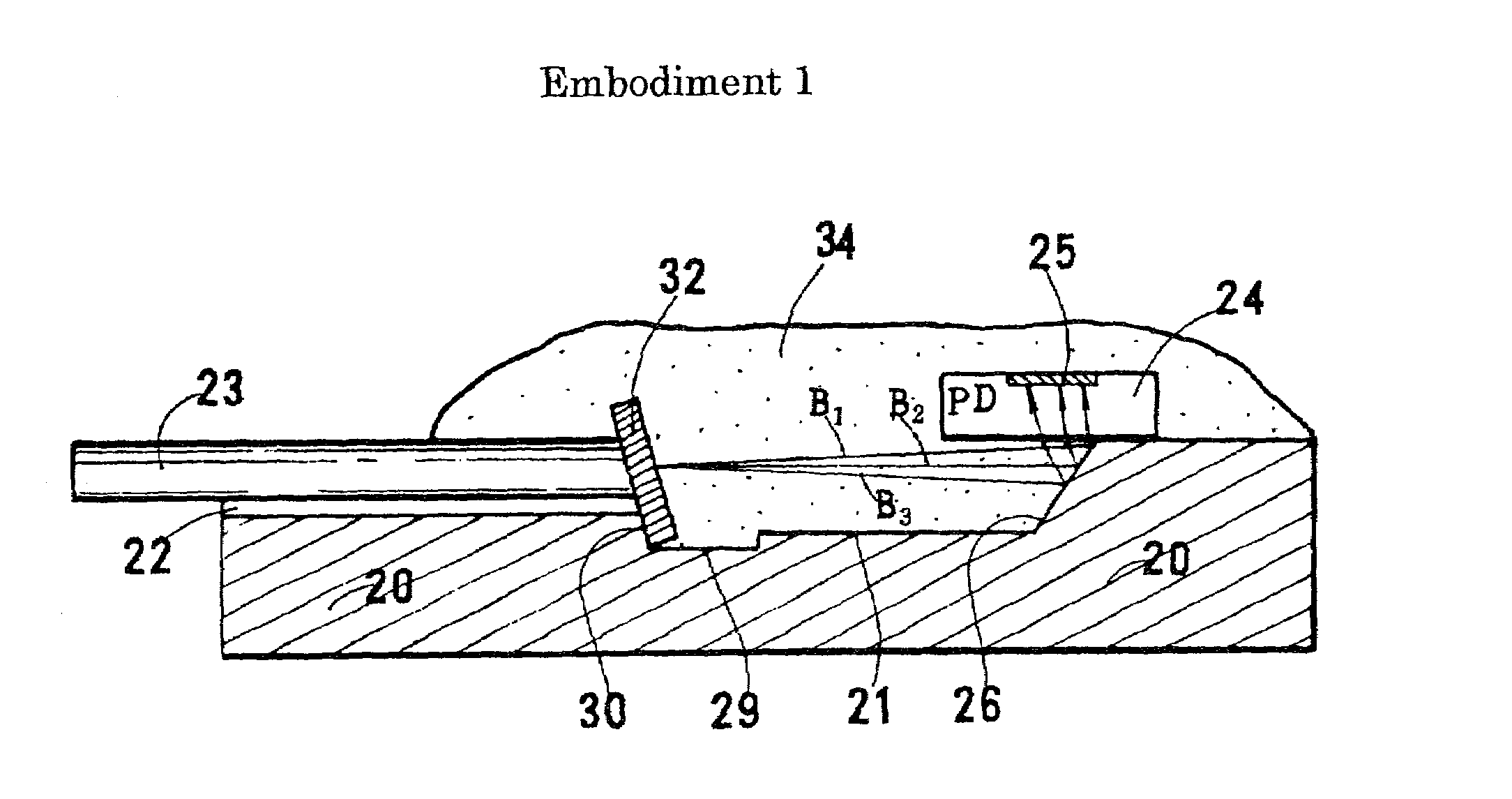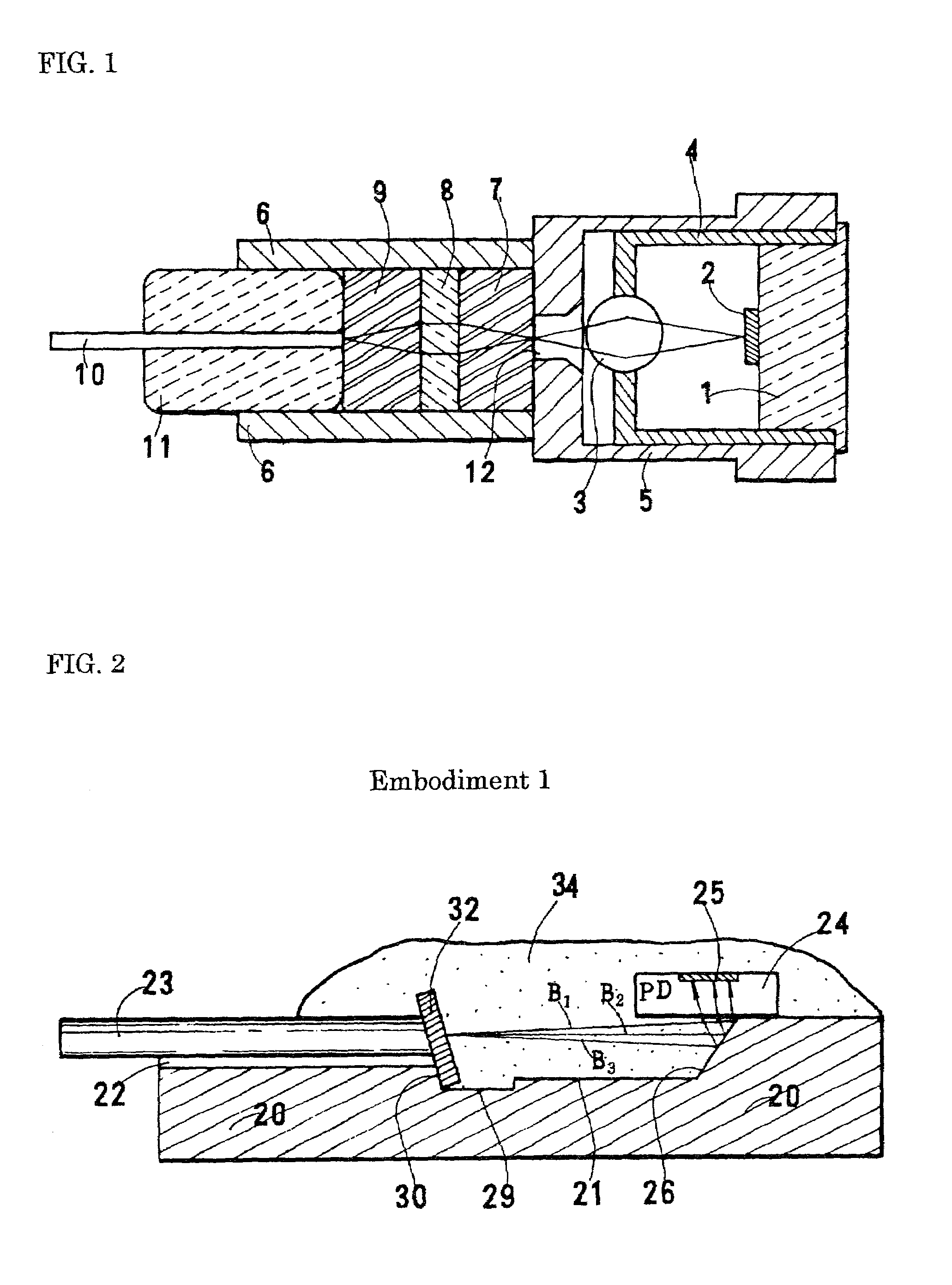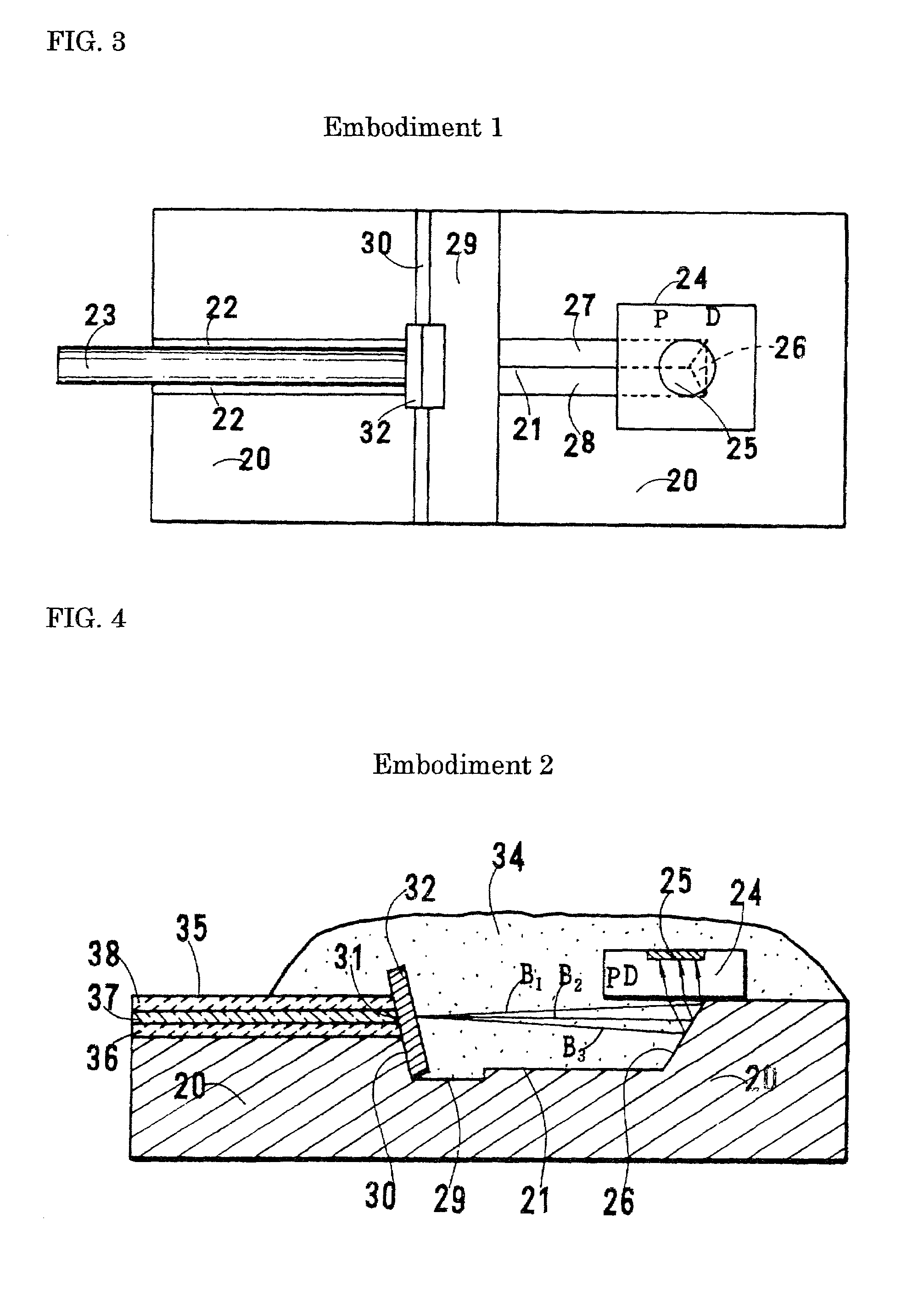Optical receiver
a receiver and optical technology, applied in the field of optical receivers, can solve the problems of minuscule gap between the filter and the light-transmitting medium, and achieve the effect of stabilizing the performance of the optical receiver, small in size, and few in number
- Summary
- Abstract
- Description
- Claims
- Application Information
AI Technical Summary
Benefits of technology
Problems solved by technology
Method used
Image
Examples
embodiment 1
[0071]FIGS. 2 and 3 show an optical receiver of Embodiment 1 of the present invention. An optical pathway-changing groove 21 and a V-shaped groove 22 are provided on the top of an Si substrate 20, which has the shape of a rectangular solid. The V-shaped groove 22 is provided from the front end to the center portion of the substrate, and the optical pathway-changing groove 21 from the center portion to the middle portion of the rear half. They are provided on the center axis of the substrate and are separated by a lateral groove 29. An optical fiber 23 is placed in the V-shaped groove 22 and fixed there. The V-shaped groove 22 eliminates the need for the alignment work of the optical fiber. The V-shaped groove 22 can be formed by anisotropic etching. It can also be formed by a mechanical means. The lateral groove 29, can also be formed by either etching or a mechanical means.
[0072]Although not shown in the figures, an electrode pattern is printed by metallizing on the Si substrate 20...
embodiment 2
[0087]FIGS. 4 and 5 show Embodiment 2. Dissimilar to Embodiment 1, an SiO2-based optical waveguide is formed on the Si substrate in place of the optical fiber, and the wavelength-selecting filter is cemented to the end face of the waveguide. Since no optical fiber is used, no V-shaped groove is required. Consequently, no optical fiber-fixing work is required.
[0088]An optical pathway-changing groove 21 is provided on the center axis of an Si substrate 20, which has the shape of a rectangular solid. The optical pathway-changing groove 21, provided at the middle portion of the substrate, has three faces: an oblique end face 26 and side faces 27 and 28. These faces are coated with gold, aluminum, or another material to increase the reflectance. A PD 24 is mounted directly above the oblique end face 26. The PD is also a back-illuminated type. A top-illuminated PD may be used by mounting it upside down.
[0089]A waveguide 35 is formed from the front end to the center portion of the Si subst...
embodiment 3
[0093]FIGS. 6 and 7 show Embodiment 3. As is the case with Embodiment 1, a V-shaped groove is provided on an Si substrate to fix an optical fiber. An oblique space is provided at the midpoint of the optical fiber, and a wavelength-selecting filter is inserted into the space.
[0094]An optical pathway-changing groove 21 and a V-shaped groove 22 are provided on the center axis of a substrate 20, which has the shape of a rectangular solid. The optical pathway-changing groove 21 is coated with metal to increase the reflectance. A PD 24 is mounted directly above the oblique end face 26. An optical fiber 23 is placed in the V-shaped groove 22 formed from the front end to the center portion of the substrate and fixed there. The end face of the optical fiber is obliquely polished to prevent the reflected light from returning to an LD. An oblique wavelength selecting filter-fixing groove 39 is provided by cutting orthogonally to the axis of the optical fiber at the midpoint of the optical fibe...
PUM
 Login to View More
Login to View More Abstract
Description
Claims
Application Information
 Login to View More
Login to View More - R&D
- Intellectual Property
- Life Sciences
- Materials
- Tech Scout
- Unparalleled Data Quality
- Higher Quality Content
- 60% Fewer Hallucinations
Browse by: Latest US Patents, China's latest patents, Technical Efficacy Thesaurus, Application Domain, Technology Topic, Popular Technical Reports.
© 2025 PatSnap. All rights reserved.Legal|Privacy policy|Modern Slavery Act Transparency Statement|Sitemap|About US| Contact US: help@patsnap.com



